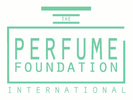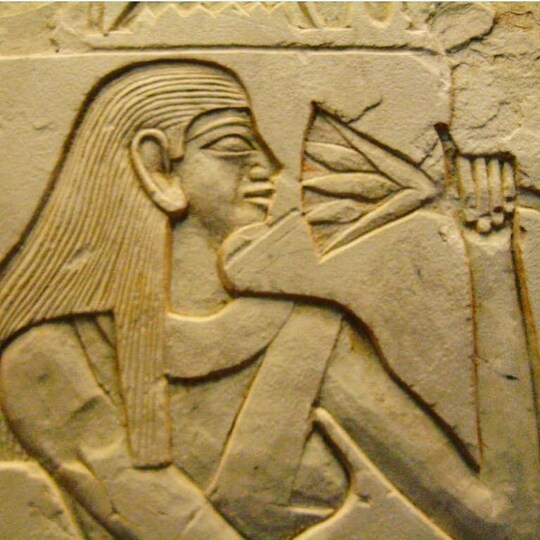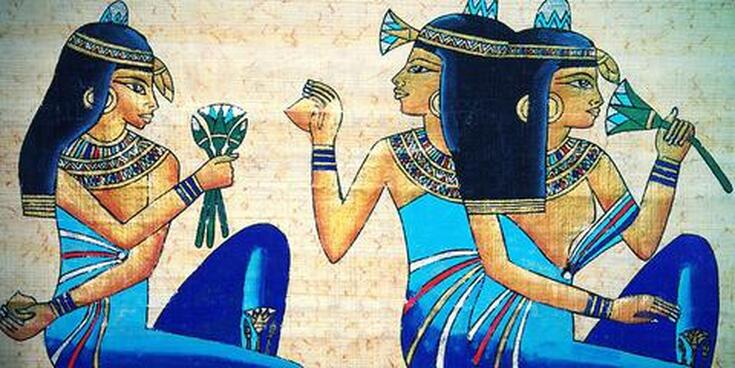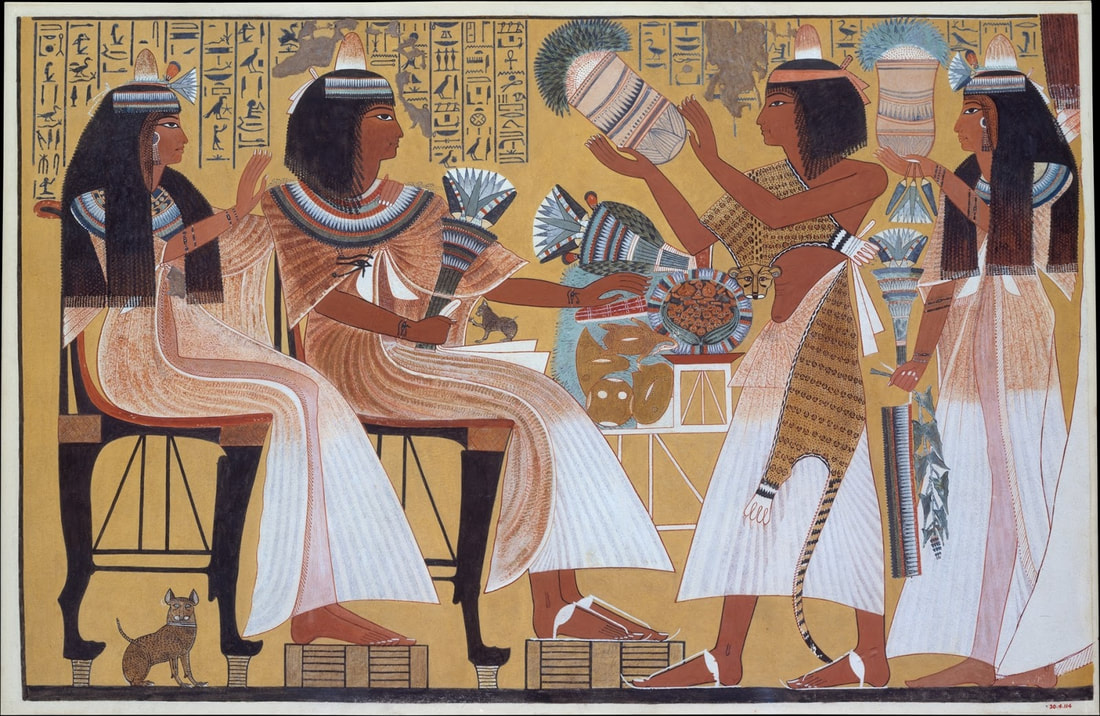|
PERFUME IN ANCIENT EGYPT NEFERTUM, God of Perfumers and Aromatherapists by Creezy Courtoy Nefertum (Nefertem, Nefertemu) was an ancient god, the God of Perfumers and Aromatherapists ( at this time perfumers were all aromatherapists ) mentioned in the Pyramid Texts (c. 2350 BC), but became more prominent during the New Kingdom (1539 - c. 1075 BC) and later. Nefertum was the son of Ptah and Sekhmet. Ptah, his father, was the creator God and the Patron of artisans. His mother, Sekhmet, was the Goddess with a dragon head who protected Egypt from its enemies but she was also the Goddess of plants and herbs and the Patron of medical and alchemist distillation. Nefertum ruled over ointments and perfumed oils. In Ancient Egypt, fragrances were considered as the essence of materialization of all things. Nefertum was thus considered the spirit of life. He represented beauty in its perfection and was associated with purification and youthfulness. His symbol and representation was the blue lotus flower, the sacred flower of Egypt through which the sun rose. Nefertum was the god of the lotus blossom who emerged from the primeaval waters at the beginning of time, and a god of perfume and aromatherapy. Nefertum was the god of healing, medicine and beauty and strongly associated with the lotus and often depicted in Egyptian art with a large lotus blossom forming his crown. The lotus was the only flowering plant in Egypt that bloomed nonstop throughout the year. Held by gods and goddesses near the nose of royal kings, queens and pharaohs as its scent, this flower was believed to be restorative and protective. Nefertum was seen as the sun god and the grandson of the sun god. He was not originally worshipped in temples, but was an important aspect of the sun god, who was later discovered as the grandson of the sun god. For the people in Egypt, he was their protector and their healer. Nefertum was linked both to the pleasant scent of the lotus flower and to its medical properties which were well known to the ancient Egyptians. He was also associated with a number of the Egyptians favorite flowers, such as rose, geranium and cornflower. In fact, he could be described as the archetypal aromatherapist. According to one legend, he brought a bouquet of beautiful lotuses to the aging Ra to ease his suffering. As a result, he was described in the Pyramid Texts as "the lotus blossom which is before the nose of Ra". He may have originally been considered to be an aspect of Atum. According to one version of the creation story of the Ennead in Heliopolis, Nefertum (translated as beautiful Atum, or perfect Atum) was born from a blue lotus bud which emerged from the waters of Nun at the beginning of creation. Atum represented the sun and so Nefertum represented the sunrise. He cried because he was alone and his tears created humanity. It was thought that he was born with every sunrise, matured into Atum during the day before passing into the world of the dead every sunset. The cycle of birth in the morning and death every evening (as the sun travelled through the underworld) represented the daily struggle between Chaos and Order (Ma´at). When Atum was absorbed by Ra (Atum-Ra), Nefertum came to be considered as a seperate deity, still closely associated with the newborn sun. Then Ptah was promoted to the chief national god and proclaimed the ultimate creator, and Nefertum was described as his son by either Sekhmet or Bast (both "Daughters of Ra"). However, as the son of Ptah, he also became patron of the perfume and healing arts derived from flowers. Thus, Nefertum was seen as both an aspect of the sun god, and also his grandson. He was also linked to rebirth, both as a personification of the newborn sun and as the patron of many of the necessary ingredients of the mummification process. A passage of the Book of the Dead says the blessed dead will "Rise like Nefertum from the lotus, to the nostrils of Ra, and come forth upon the horizon each day". The Egyptian pantheon is particularly huge and fluid, with a wide variety of deities entering and exiting each other's myths. Nefertum used to be depicted as a beautiful young man wearing a lotus headdress, sometimes standing on the back of a lion. Occasionally he wears a headdress with two feathers and two necklace weights that were fertility symbols associated with Hathor (who in turn was closely associated with the two goddesses described as his mother, Sekhmet and Bast). He was sometimes depicted as a man with the head of a lion or as a reclining lion or cat. In this form, he was associated with the lion god Maahes, who may have been his brother, but may also have been an aspect of Nefertum. Like the newborn sun, he was generally depicted as a beautiful baby sitting on a lotus bud. Sometimes his body was shown wrapped like a mummy, with his arms and face unbound. He also had a lion or cat shape, attributed to his mother. He was also depicted as a human head emerging from a large water lily. For the ancient Egyptians, however, with their holistic understanding of the universe, fragrances and perfumes were not only beautiful, but were also spiritual and therapeutic. The Blue Lotus The lotus flower flourishes on the banks of the Nile. It opens its large petals with the rising of the sun. To the ancient Egyptians it represented the sun because it banished darkness. Blue Lotus played a unique and important role in Ancient Egyptian culture. The plant was widely popular for its mood enhancing and mild psychedelic properties. Used both recreational and for spiritual effects, they often made a concoction out of Blue Lotus and wine.
This flower has even been placed alongside the deceased in ancient tombs. The plant is often depicted on walls and paintings as well, often depicted together with wine. The Blue Lotus was even the symbol for the union of Upper and Lower Egypt. Commonly used in art as a symbol of Upper Egypt. It was often shown with its long stems intertwined with papyrus reeds (a symbol of Lower Egypt) as a representation of the unification of the two lands. For the Ancient Egyptians, The Blue Lotus represented how the sky greeted the sun. Just as the sun rises above the horizon to start the day, the flower opens in the morning. Then just when the sun is setting, the flower closes itself at dusk. And because of this, the Egyptians coined the Blue Lotus the sacred flower of the sun and sun gods. As this symbol means also the creation and rebirth, the lotus is a fixed part of tomb and coffin decoration, often in combination with the scarab, which has similar symbolic meaning. If you want to learn more about national flowers visit my blog powerfulflower.blogspot.com
2 Comments
Aromatic Journal of an Olfaction Trainer by Maria Rodriguez Genna One of the exercises during Creezy Courtoy’s olfactory training course was to be fully conscious of our sense of smell and to note our progression everyday. It was an interesting experience being purposely smelling everything to train my nose.
First day: What I recognized is the smell of skin. Clean skin, dirty skin, also my little daughter received a vaccine so I smelled her arm and I noticed a change in her natural scent, not long afterwards, but it was more noticeable the next day. On the street I smelled the salty air, the fresh green aroma of the trees, the gasoline obnoxious scents from the traffic. Second day: I tried smelling ice, although it just smells like water, practically inodorous, the cool feeling has an effect on the nose. This cold scent is difficult to describe. It’s fresh, cold, sharp, almost metallic or even gassy like smelling nitrogen or helium. I didn’t go out for many days because my daughter became ill with fever for days due to the vaccine and I had to stay home to take care of her. So I did experiments with what I had around me at home, like laundry, cleaning items, medicines, etc. Third day: I did a different exercise, I used imagery to recall or remember how a scent smelled. Like the sea and the beach, or for example amber notes, how a cake would smell,etc. I also used images like paintings and tried to imagine how colors would relate to scents, for examples amber notes, the color already tells us of possibly resinous, heavy notes or even honeyed, white can be powdery, heady aromas, narcotic. So it was like trying to smell a painting. Fourth day: I tried imagining what notes would have a perfume I’d like to create, and if they would harmonize. When I imagined the notes, the scents came to mind, like a faint sketch of a drawing, with colors and scents. I would need materia prima for experimenting with these notes and to corroborate if my imagination was correct and they are harmonious or not. Fifth day: I quickly went to pick a package to the post office but with masks it’s difficult to smell much, only this cottony artificial scent it has, very unpleasant. They smell a lot like hospital sanitizer. It’s an interesting observation, how if we are very distracted with chores or if we go out but are thinking about something while we walk, we tend to lose the scents, because our attention is overpowered by thoughts and our other senses. This is something I’m trying to train myself to, because very easily my other senses overpower my nose, unless of course I close my eyes or try to consciously smell, with intention and full attention. Last day: Noses can get accustomed to some smells, that is an observation. I need to focus on something different for a few minutes, then I can revisit certain smells to be able to analyze them. My dry allergic nose doesn’t help either. So much pollen in the air, it can be smelled and it makes the throat and nose powdery and itchy. I will keep training because I’m very used to daily scents, that they disappear into the background. Usually opening a window helps, I notice it moves scents around and that makes my brain perceive them better. I’m trying to train my nose to human skin odor. Just like I can recognize my little daughter’s natural skin scent, I’m trying to consciously remember or discreetly smell people close to me,to see if I can learn their unique aroma. It would be like taking an aromatic photograph to remember them. So far, I’m being successful with people that are very close to me. The challenge is to smell different people and without them noticing -hahaha- but it’s an interesting anthropologic experiment. There’s someone I know, a really good friend, that smells incredibly good and it’s not perfume but natural scent. So all this research made by Creezy Courtoy about gorillas is starting to make sense, how they can recognize each other by scent, chose healthy future partners, etc. For someone in this field it is normal musings, but for the rest of the world it is politically incorrect so I have to be cautious if I will be training with human species. Gorillas would appreciate me getting to know them by scent much more! |
Archives
March 2024
Categories
All
|
- Home
- About
- Why choosing us
- Mission
- Academicians
- IPF Certification
-
COURSES
-
MASTER CLASSES
- Teaching Methodology
- Natural Raw Material Extraction Methods >
- Natural Candle Making
- Healing Gardening
- Sustainable Oud MasterClass
- World Perfume History Master Class
- Scent Design and Formula Building >
- Fragrant Botany & Chemistry >
- Perfume Design, Concept and Storytelling
- French Natural Aromachology #1
- French Natural Aromachology #2
- Olfaction Training for Children
- Accords - Musks
- Accords - Chypre
- Accords - White Florals 1
- Accords - Fougeres and Aromatics
- FRAGRANCE DEVELOPMENT
- SPEAKERS
- EXHIBITIONS
- Partners
- Blog
- Contact






 RSS Feed
RSS Feed
